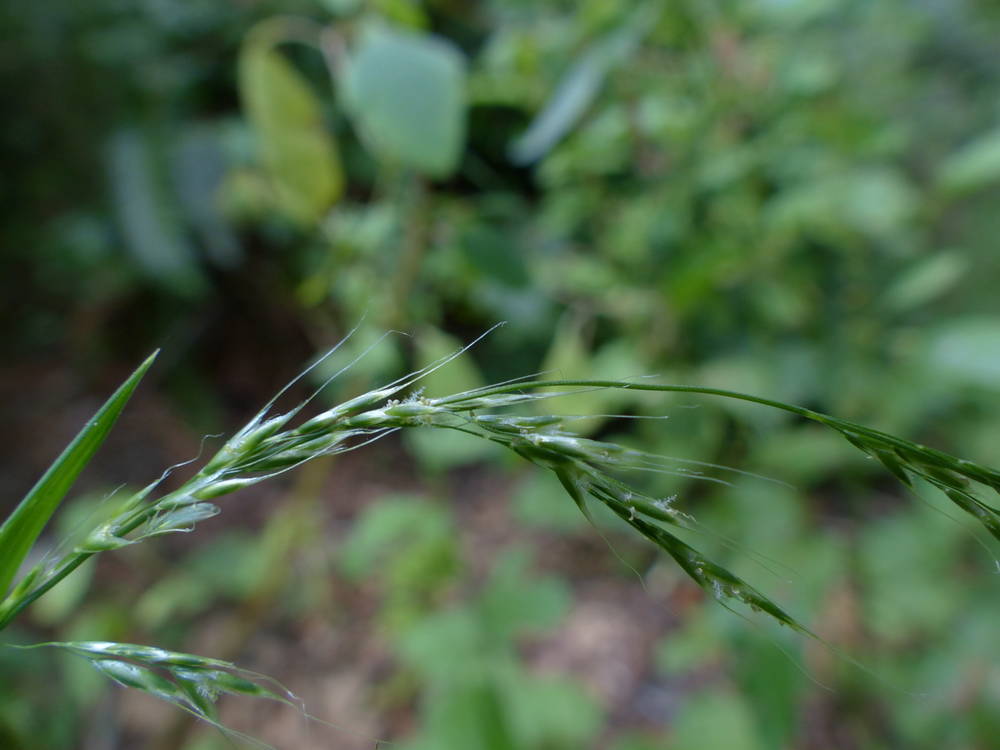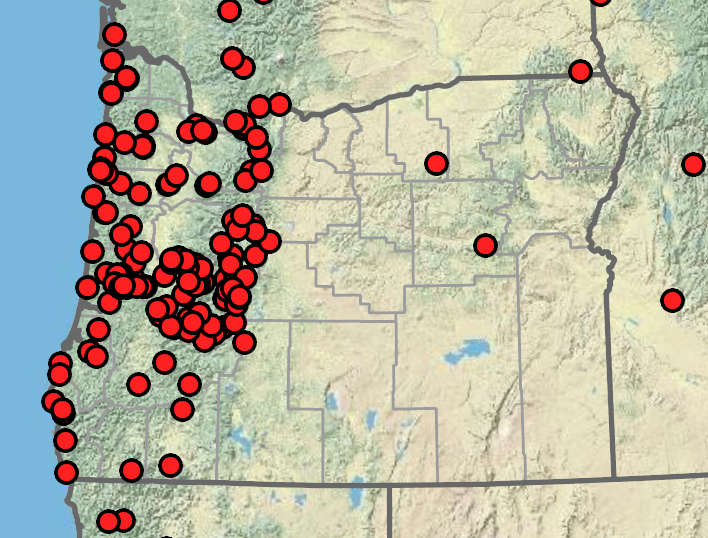Trisetum cernuum
nodding oatgrass, nodding trisetum
basal and cauline;
ligules 1.5– 3(3.4)mm;
blades (3)7–12 mm wide, often minutely scabrous.
open, nodding throughout, 10–30 × (1)2–9 cm, green or tan, occasionally purple-tinged;
branches filiform, flexuous; at least the lowest 1–3 whorls spreading or drooping, 2–12+cm; most spikelet-bearing in the outer 50–67%; the uppermost sometimes spikelet-bearing to the base.
6–12 mm, 3–5 florets; upper 1–2 florets usually reduced.
lower glumes subulate, 0.75–2.5(3.5) mm;
upper glumes ovate or obovate, 3.5–5 mm, usually shorter than the lowest florets, 2–3 times as wide as the lower glumes, rounded to the acuminate tips.
densely to sparsely pubescent.
broadly lanceolate, 5–6 mm, glabrous;
tips with 2 teeth to 1.3 mm, awned;
lemma awns arcuate to flexuous; (7)9–14 mm, arising from above mid-length to just below the teeth, conspicuous.
about 1 mm.
=42.
Trisetum cernuum
Moist forests and streamsides. 0–1600m. BW, Casc, CR, ECas, Est, Sisk, WV. CA, ID, NV,WA; north to AK, northeast to MT. Native.
Trisetum cernuum is a flat-leaved grass with a nodding inflorescence. Trisetum canescens is very similar but has an erect inflorescence with shorter branches that are usually spikeletbearing to the base and it usually grows in slightly drier habitats. It has longer ligules, on at least some leaves, and proportionately larger lower glumes. Occasional plants of T. cernuum have lower glumes more than 3 mm but otherwise have the traits of the species. Trisetum canescens has been treated as a subspecies of T. cernuum
Barbara Wilson, Richard Brainerd, Nick Otting
- Local floras:
BC,
CA,
OR,
WA
- Local Web sites:
CalFlora,
CalPhotos,
Flora NW,
PNW Herbaria
WildflowerSearch
iNaturalist (observations)
USDA Plants Database
- LBJ Wildflower Center
- SEINet
- Plants of the World Online
- Encyclopedia of Life
- Wikipedia
- Google Image Search



